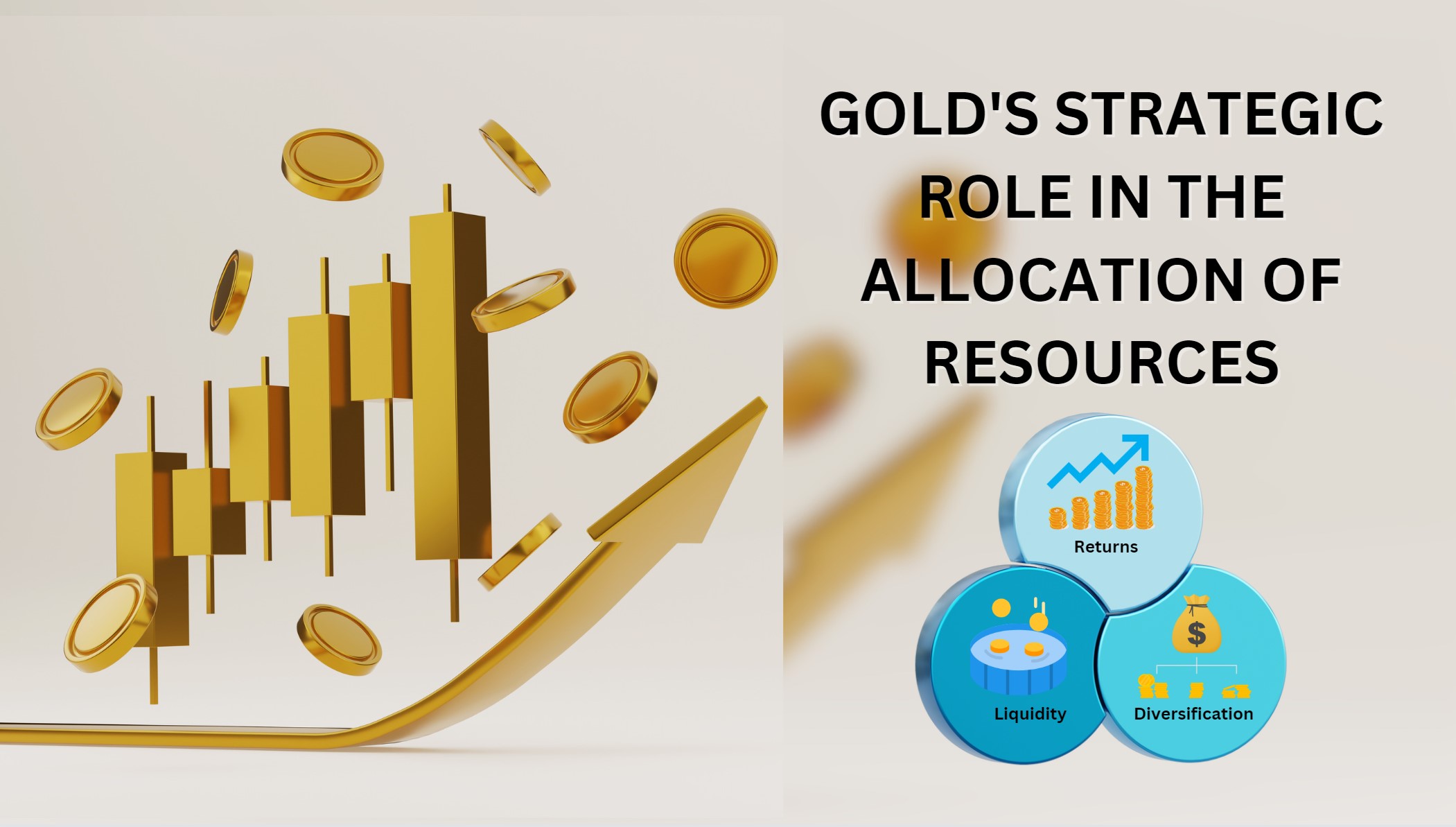Gold is a strategic asset, but why?
Strategic long-term investments and well-diversified portfolios must include gold as a mainstay allocation. During periods of economic uncertainty, long-term investors have taken advantage of gold’s safe-haven status and recognized much of its value over time.
Historically, gold has kept its value over time because it is highly liquid, it carries no credit risk, and it is scarce. Aside from its use as an investment, a reserve asset, a gold jewellery component, and a technology component, it is also in demand from a variety of sources. There are three key ways in which gold can enhance a portfolio:
- Returns on investment over the long term
- Diversifying the economy
- Liquidity provision

In addition to stocks and bonds, gold is an excellent addition to a broad-based investment portfolio because of its characteristics.
Furthermore, we believe that gold can play a role in supporting ESG objectives as investment strategies increasingly integrate environmental, social, and governance goals. Responsible gold sourcing and delivery should be recognized as an asset with high ESG standards. In addition, gold can reduce investor exposure to climate-related risks.
Demand for gold remains above long-term average
In Q3’22, central banks bought gold at a historic pace, but fell short of the record set in Q3’22. The investment picture was mixed in the face of high gold prices, while jewellery demand softened slightly.
Despite 8% above its five-year average, gold demand in Q3 was 6% weaker year over year at 1,147t. The total demand for 1,267t was up 6% y/y, including OTC and stock flows.
Despite the exceptional 459t of central bank buying from Q3’22, this quarter was third strongest in our series. Central banks’ demand year-to-date is 14% higher than the same period last year at a record 800t.
Although Q3 investment demand was 56% higher y/y than the previous quarter, it was weaker than its five-year average of 315t. There was a far smaller outflow of 139t from global gold ETFs in Q3 compared to Q3 ’22 (-244t).
Investment in bars and coins declined 14% y/y to 296t, but remained above the five-year quarterly average of 267t. Europe’s sharp declines account for much of the y/y decline.
In Q3, OTC investments totaled 120t. Even with ETF outflows and declining COMEX futures net longs, this opaque source of demand supported the gold price for much of Q3.
In spite of continued gold price strength, jewellery consumption declined 2% y/y at 516t. A buildup of inventory caused a slight decline in jewellery fabrication, which fell 1% to 578t.
Volumes of gold used in technology continued to fall, falling 3% year over year to 75t as a result of a fragile consumer electronics market.
Total gold supply increased by 6% y/y to 1,267t in Q3, as mine production reached 971t. In addition, recycling increased by 8% to 289t y/y.
Compared to its 10-year average, gold demand in Q3 was weaker y/y, but healthy.
Highlights
The LBMA (PM) gold price averaged US$1,928.5/oz during Q3. Despite the 2% drop from the record high witnessed in Q2, the price remained 12% above the year’s average. Several countries witnessed a rise in local gold prices, primarily due to currency devaluation against the US dollar. Countries like Japan, China and Turkey were part of this list.
There is a 14% increase in central bank gold purchases versus 2022. Central banks have purchased 800 tonnes of gold in the past nine months, the highest amount in history. In recent quarters, central banks have added to their reserves from a broad range of countries, while there is a nucleus of committed regular buyers.
In general, investment demand has been mixed y-t-d. Bar and coin demand has been in line with the Q1-Q3 of last year, due to strong H1 demand in the Middle East, Turkey, and China. A total of 189t has been outflowed from gold ETFs this year, resulting in a six-quarter decline in demand for gold ETFs.
Having achieved a record Q3, mine production reached a new Y-T-D high of 2,744 tonnes. This puts 2023 on track for a new record. Recycled gold supply is also up (+9%) at 924 tonnes. Despite elevated gold prices supporting this supply, the US economy has been resilient and the Middle East has been driven by strong investment.
CONTACT US :
Website : www.forextrade1.co
Twitter : www.twitter.com/forextrade11
Telegram : telegram.me/ftrade1
Facebook : www.facebook.com/Forextrade01
Instagram : www.instagram.com/forextrade1
YouTube : www.youtube.com/ForexTrade1
Skype : forextrade01@outlook.com
Email ID : info.forextrade1@gmail.com
Discord : https://discord.gg/vEk98ZvrHP
LinkedIn : https://www.linkedin.com/company/forextrade11


